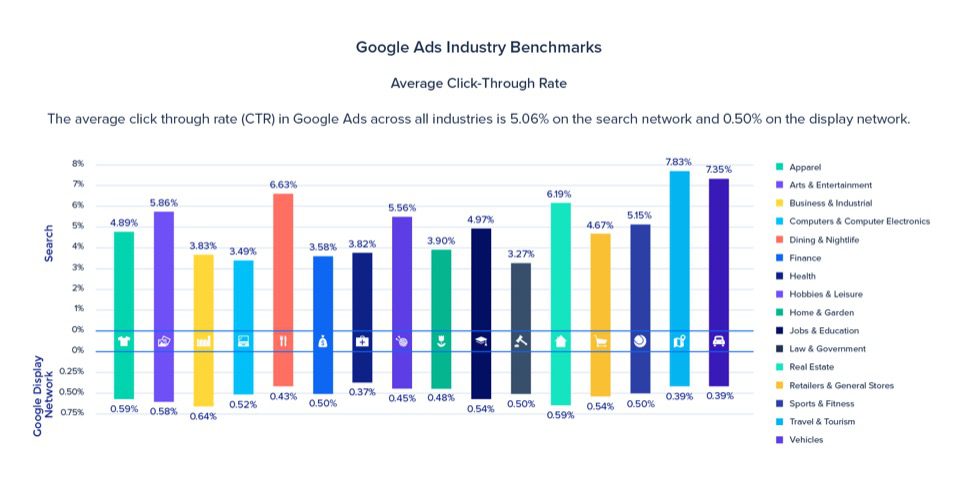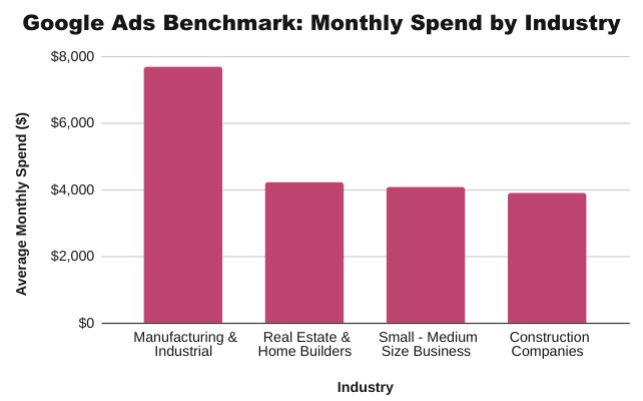
Paid search is one of the most powerful digital marketing channels available. Not only are you able to reach prospective customers who are actively searching for your services, but you’re also able to collect valuable data about which messaging does and does not resonate with them.
While the impact of PPC is undeniable, planning a budget for it can be challenging. There are many variables to account for. The dynamic spending model used with PPC can add an additional layer of complexity.
It’s also important to allocate the budget based on the type of campaign, such as shopping, display, branded/non-branded, etc. as well as considering the audience type (prospecting, retargeting, etc.)
To avoid getting lost in the weeds, it’s a good idea to go back to the basics. Here are a few steps to help you plan your PPC marketing spend.
Table of Contents
Start with your Marketing Goals
As is the case with all of your marketing efforts, your larger marketing team goals should guide your spending.
At the beginning of each fiscal year, your team likely sets goals in areas such as the number of leads you generate, conversions, and revenue. With your goals in mind, you can work backward to determine what outcomes your PPC marketing efforts will need to produce to achieve them.
Let’s use a revenue goal as an example. If you are an ecommerce business, you’ll want to calculate your average order value (AOV) from the previous year. Any other form of business should calculate its customer lifetime value (CLV). Once you’ve calculated these values, use Google Analytics to see how much traffic to your website paid search generated in the prior year, as well as what percentage of them converted.
For example, let’s say you spent $100K in ad spend and brought in 100 conversions with a cost per conversion of $1,000 in 2022-2023 and your AOV was $5,000. Your revenue for 2022-2023 would be $500k. If your goal for fiscal year 2023-2024 is 20% revenue growth year over year (YoY), calculate the projected increase in conversions (100+20% in this case). With a well planned strategy to minimize an increase in the cost per conversion, we could project a minimum budget for 20% growth to be $120k. Accounting for any increases in our cost per click, and temporary cost per conversion increases while the new strategy is tested, you will want to plan for a budget over the minimum initially. Then, multiply those together to determine the estimated ad spend budget, which in this case, would be around $144K. You can use this formula to determine how much traffic paid search will need to generate in order to achieve your team goals.
Once you’ve grounded your PPC spending in your larger marketing goals, you’ll be ready to get started on planning your budget.
Choose your Target Keywords
Unsurprisingly, the keywords you use in your PPC campaign play a significant role in your budget.
Your target keywords shouldn’t be a product of guesswork. Instead, use the data sources available to you. Google Search Console is a free tool you can use to learn the search terms that most often lead users to your company website. If your budget permits it, you can also sign up for paid subscriptions to services such as Ahrefs and SEMrush. These services show you not only the most effective keywords on your website, but on your competitors’, as well.
Once you’ve zeroed in on the most promising keywords, you can move on to researching the search volume for each of them. Another free tool from Google, Google Keyword Planner, can come in handy at this step in your PPC marketing budget planning process. Simply search for the target keywords you’ve identified and record the number of average searches they receive each month.
Keep in mind that search volume metrics on Google Keyword Planner are only estimates, so don’t become discouraged if one of your search terms doesn’t quite have the amount of interest you expected.
Your next step is estimating how many potential customers will see your advertisement, and how many will actually click on it.
To estimate your impression share, multiply the average search volume for each of your terms by either 70 percent or 50 percent. For a more conservative estimate, go with 50 percent and, for a more aggressive one, go with 70 percent.
Once you’ve found the impression shares for each of your search terms, it’s time to estimate how many clicks advertisements for each term will generate. You should be able to find the average CTR for each search term on Google Keyword Planner. Multiply this amount by the impression value you calculated earlier to estimate the number of clicks your advertisement could receive in a month. Then, once you’ve found the monthly volume, multiply the value by 12 to determine how many clicks the term is likely to receive over the course of a year.
Calculate your Spend for Each Keyword

Source: Instapage
Now that you have estimated the number of clicks your PPC marketing campaigns could potentially generate, it’s time to calculate your cost-per-click.
Once again, Google Keyword Planner should be your first stop. Although Keyword Planner only lists CPC for the most popular search terms, there is a good chance you’ll be able to find estimated CPCs for a few search terms. You can also find CPCs using some of the other tools mentioned earlier, including Ahrefs and SEMrush. It’s worth reiterating the values provided by these services are only estimates.
There will, of course, be a number of keywords you’ve chosen in which CPC values aren’t readily available. For those terms, you can instead use industry benchmarks, which should provide you with a basic idea of how much you should expect to spend on the keyword as a part of your PPC marketing efforts. Generally speaking, the average CPC is usually between $1 and $2.
Regardless of whether you use publicly-listed cost-per-click values or industry benchmarks, you will need to multiply the CPC for each term by their estimated number of estimated annual clicks. Add all these values together to reach your unadjusted PPC budget.
Adjust for Seasonality

With PPC marketing, keyword search volume varies depending on the month. You need to factor this into your monthly budget for each search term.
There are two potential ways to learn about seasonal variations in spending on keywords: Historical data from your company website and Google Trends. If you decide to use your company website, you can simply look back over the past five years to see what months your sales were lower than normal. You can use the percentage difference between average sales during those down months and your monthly sales averages to arrive at a rough estimate of your PPC marketing spend for those months.
Alternatively, you can enter keywords into Google Trends and see how seasonality has affected search volume over the past five years. Download the data, and then comb through it to find months in which searches were consistently down. Calculate the average total number of searches for those down months, and then find the percentage difference between those months and the monthly averages.
Using this data, you can estimate the total number of searches for each keyword during those down months in the upcoming year. From there, you can use either your historic CTR data or industry CTR benchmarks to get a rough idea of how many clicks you can expect and, in turn, the amount you should expect to pay for PPC marketing during lower search volume months.
Forecast your Profitability
Ultimately, your PPC budget needs to tie back to business outcomes. While pay-per-click ads on average generate $2 for every dollar you invest, you need to be as precise as possible in your planning.
Return on Advertising Spending (ROAS), or the ratio between the amount spent on a campaign and the amount of revenue it brings in, is the metric you’ll want to target at this step in the process. You can determine what your ROAS for the upcoming year should be based on historical data, projected growth, and industry benchmarks.
You should, however, pair ROAS with metrics that factor in repeat purchases, such as customer lifetime value, since ROAS typically only covers a customer’s first purchase. In fact, CLV is one of the most powerful metrics you can use to measure the efficiency of your PPC marketing efforts since it factors in customer acquisition cost (CAC). Your paid search CAC should never exceed your CLV. In fact, most sources recommend a CLV to CAC ratio of 3:1
When combined, these metrics should offer you a clear picture of your paid search campaigns’ potential profitability. If you find the projected profitability of your paid search campaigns fail to align with your company’s goals, you should consider either targeting fewer keywords overall, or reducing spending on your other marketing channels.
Perform a Final Check

Source: Evenbound
The hard work is out of the way. Now, it’s time to make sure the numbers you have listed make sense.
It probably doesn’t come as a surprise at this point, but you should compare your PPC marketing spend to others in your vertical. While the average company spends anywhere from $9,000-$10,000 a month on paid search campaigns, you should also consider factors such as your industry, company size, and macroeconomic conditions.
You should also review your PPC budget from the previous fiscal year. Although you may want to grow your budget to keep up with rising revenue expectations, you should review your current year’s budget to make sure it isn’t totally out of line.
Don’t Panic
The beauty of PPC marketing is its flexibility; if you realize midway through the year you’re overspending on your campaigns, you can easily adjust it to ensure it falls within your annual budget. You can also swap out keywords that are underperforming and add emerging ones with only a few clicks.
If you’re in search of guidance as you put together your PPC strategy, contact the experts at Coalition Technologies. We have helped our clients generate more than 5 million leads through industry-leading digital marketing strategies. Contact us today to get a free strategy review.


